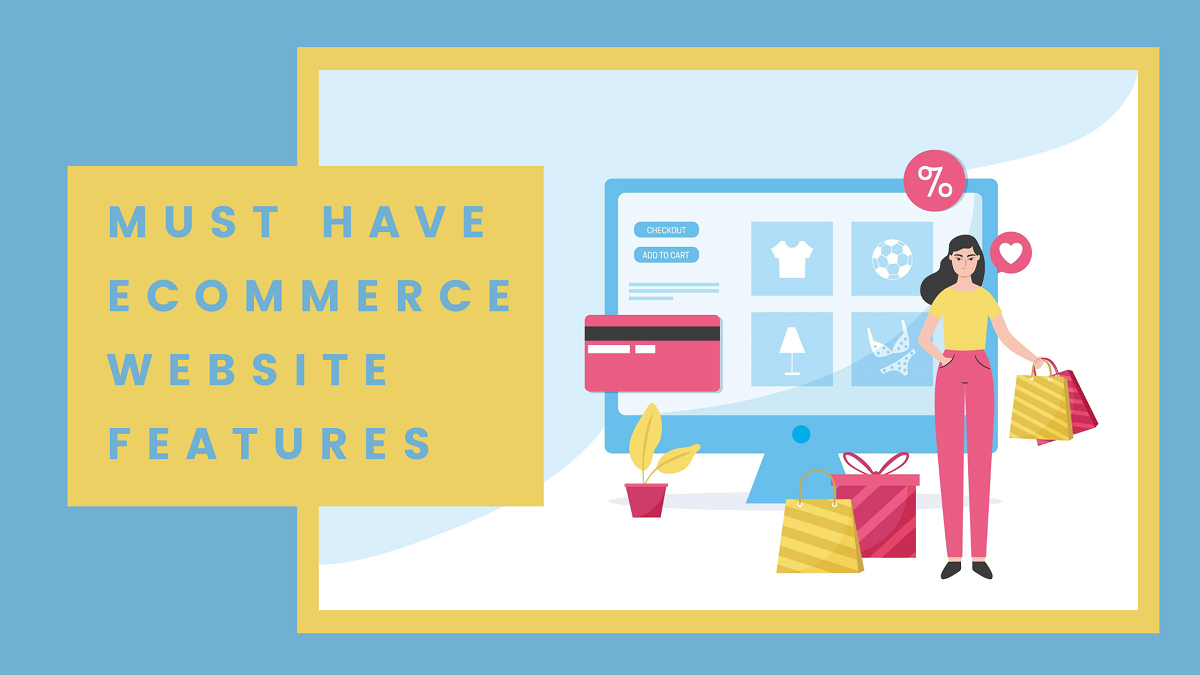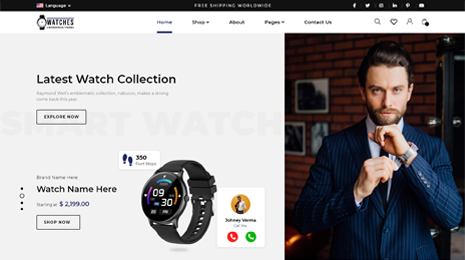As a novice entrepreneur starting an e-commerce business, you will have to overcome numerous obstacles. You must source legal products to sell, register your business. You must follow ecommerce website designing tips to ensure well responsive website.
However, the most critical factor for success is understanding what customers are looking for and meeting their needs. It can be a formidable task.
In 2020, the U.S. e-commerce sector experienced 44% growth, with customers spending more than $860 billion online. Now it makes the optimal time to concentrate on refining your e-commerce presence. Therefore, ecommerce website with attractive features help to increase the possibility of success with your digital clients.
If you aim to establish an e-commerce website to generate revenue or enhance your existing website. It concentrates on several e-commerce website features that will aid you in building a website that customers appreciate. Find out which e-commerce website components and characteristics you must incorporate to ensure success.
Best Ecommerce Website Features to Include
To ensure success for an eCommerce business, developers must focus on the eCommerce platform’s functionality, design, and features. Customers appreciates a website that is faster, mobile and user-friendly, quick to load and offers a range of ecommerce website features.
It makes the shopping experience positive. If these criteria are met, the eCommerce website will be more likely to thrive. Below are some of the features necessary to include in ecommerce websites. Let us have a look:
1. User-Friendly Routing
Design a customer journey that is easy to navigate and understand for customers to find and purchase products. Utilize a hamburger menu, a well-crafted header, and clear call-to-action (CTA) buttons. Inclusion of user-friendly navigation on your ecommerce website helps to make it easier for customers to find the products they need. Create an extended footer with a site map to ensure customers stay aware of the website.
A website that can provide a consistent experience with no matter the device is critical in today’s market. To make this process easier, selecting a responsive ecommerce WordPress theme is wise. It will ensure a seamless transition between screens for your customers.
2. Product Information
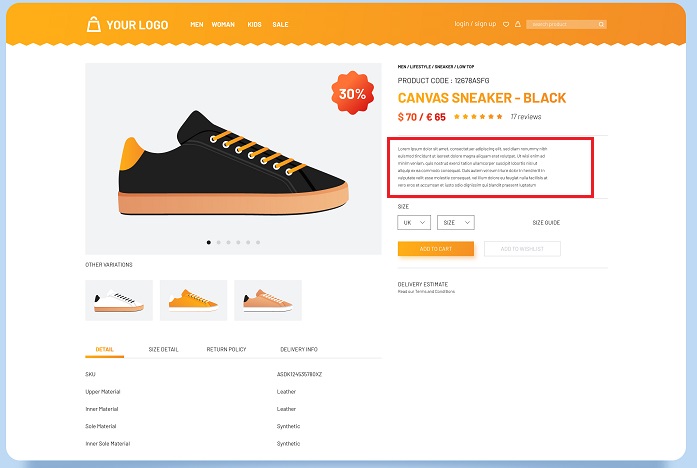
Having a search bar on your website can be very beneficial. It makes it easier for those who know exactly what they want to find it quickly. In addition, it can even assist those who need help finding what they’re looking. This ecommerce website feature is helpful by guiding them to the right destination.
However, the most crucial element of any website is the product photos and videos. High-quality visuals that illustrate the product’s features. Additionally, it can help customers make decisions and reduce the number of returns.
It is essential to have correctly lit, styled, and detailed photos to show the color, size, and other variations. Videos effectively demonstrate how your product works in its intended environment or provide instructions to customers. Ensure your videos are sized correctly and optimized for quick loading to ensure that they don’t hinder webpage loading times.
3. Seamless Footer Navigation
Include links to your top products, services, and information in your website’s footer. It will help customers quickly access the most critical information and products they seek.
Additionally, consider including links to plans, company information, social media profiles, featured phones, multilingual sites and support. It is an easy way to find the information they need from any page of your ecommerce website.
3. Multi-Payment Interface

Online retailers often face high levels of shopping cart abandonment. To increase the chances of customers completing their purchases, making the checkout process as simple as possible is vital.
Offer customers various payment options such as debit and credit cards. In addition, include PayPal, Stripe, and other buy now, pay later plugins. Thus, this features inside your ecommerce website will make it more likely for customers to press the “Purchase” button.
4. Customer Ratings and Reviews Presentation

For online shoppers who cannot physically touch and feel products, customer reviews and ratings are essential for purchasing. To ensure customers have access to this information, brands need to ensure they enable and encourage customers to leave reviews.
Adding a section on your e-commerce website devoted to customer reviews is essential for any successful online business. With 79% of customers now viewing reviews as highly as recommendations from personal contact. It provides space for customers to read honest product reviews. Thus, it could be a deciding factor in whether or not they make a purchase.
This space allows customers to see what others have said about a product before they make their decision. It is quite useful as they won’t have the opportunity to see it in person. Reviews can help give customers the confidence they need to make a purchase decision.
5. Consumer Discounts and Features
Customers appreciate feeling like they are receiving good value and being treated differently than other buyers. Provide personalized deals, features, and other user perks in the ecommerce website. It helps to give them a personal and attractive experience. Offer customers an account to access loyalty prices, their individualized wish list, and past purchases.
An automated emailing system from an e-commerce platform is used to send exclusive offers to devoted customers. Additionally, have a generous return policy displayed on the product page. Thus, inclusion of this ecommerce feature is preferably close to the add to cart button, to increase the likelihood of more purchases.
6. Well-Designed Shopping Cart
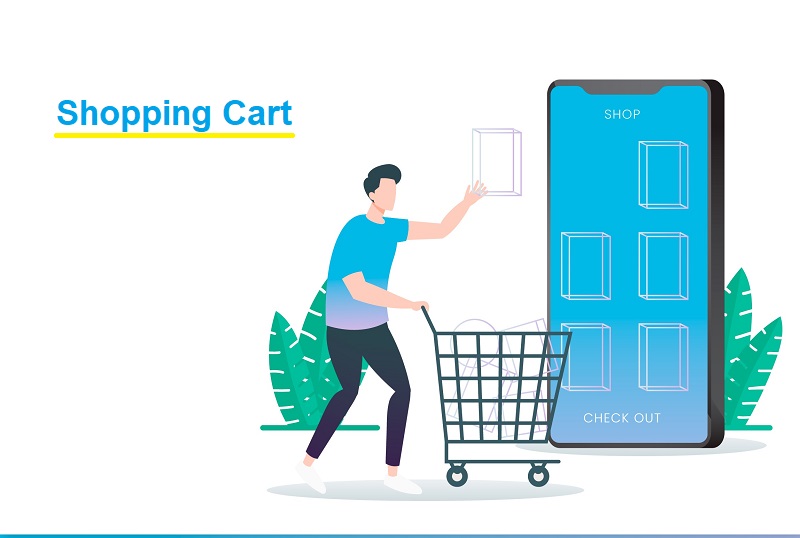
An ecommerce website should feature a shopping cart as its most essential element. It should have a design with a straightforward interface. It must incorporate the company’s branding (including colors, logo, and motto) and providing clear checkout options.
The cart should allow customers to view an overview of their purchase, add or remove items, and adjust quantities. In addition, it also has chosen shipping options, entered promotional codes, or continued shopping.
7. Chatbots

Chatbot installation has various benefits to business websites. Brands can strengthen their customer bond by being accessible for interaction and providing all the necessary information. The development of AI technology and the growth of e-commerce chatbots is a great help.
You can easily install chatbots plugins to ensure that your ecommerce customer inquiries are answered at any hour. Moreover, it is also possible from any location with this feature. It helps at a much lower cost than hiring live agents.
It allows the brand to stay with the customer during their buying journey. Moreover, you can address their concerns, and generate greater returns on their investment.
8. FAQ Segment

Customers often have queries regarding the product or service they are planning to purchase. However, if they do not find the answers on your website, they might wander off to another website.
To prevent this, brands can introduce an FAQ segment to their ecommerce website. It is essential to ensure the FAQ segment can be found without any difficulty and allows customers to browse through the answers with ease.
An FAQ segment offers an opportunity to provide customers with essential details and deal with commonly asked questions before sales. Thus, allowing ecommerce brands to establish a rich buying experience, increase sales, and save customer service time.
9. Push Notifications
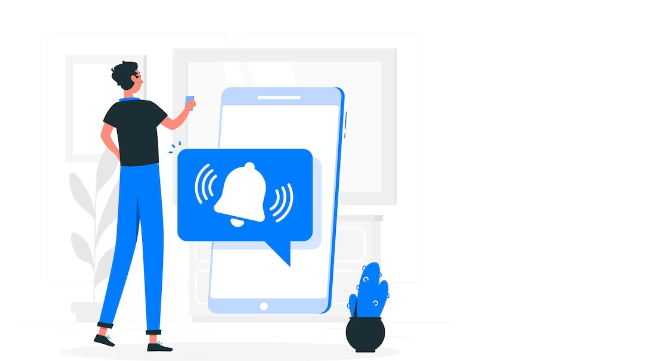
Have you ever come across a notification from a clothing store or food delivery app, letting you know about your abandoned cart and new offers? If you think websites can only send notifications via emails for these purposes, then you are wrong.
One of the crucial ecommerce website features includes push notifications. Just as mobile apps have the liberty to send smart and persuasive notifications to their customers, websites can do the same. When building an ecommerce site, brands can integrate push notifications for their websites.
Employing this feature, many popular ecommerce businesses look forward to growing engagement and establishing better connections with their customers. Visitors can subscribe to your website’s latest updates via push notifications. The visitor’s browser will receive messages regarding these updates.
10. Real-time Order Tracking
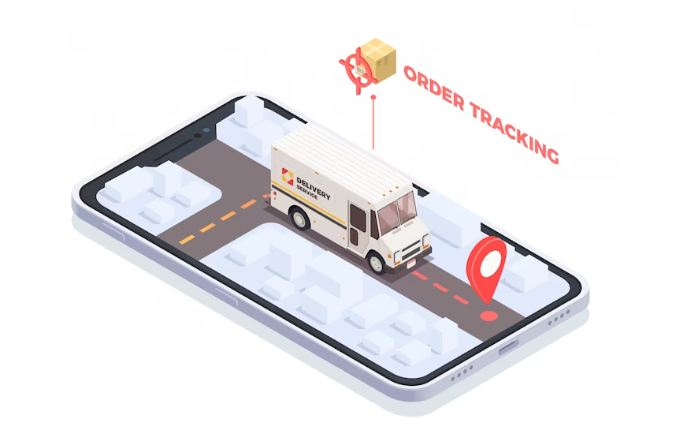
With real-time order tracking, a customer will have all the details from confirmation of their product to when it is out for delivery. The tracking feature utilizes a logistics database along with a GPS to determine where the parcel is in actual time.
Monitoring a package tells the businesses where the packaging is and if there are any chances of delay. The information regarding a customer’s parcel will reflect on the website in their purchase details. Thus, offering them total visibility.
Additionally, this website feature also informs the buyer about the time when their packaging will arrive at their registered address. By sending timely notifications, ecommerce businesses can enhance their customer experience.
11. Comprehensive Return and Shipping Information
When purchasing a new product, customers have a lot of anxiety and doubt surrounding the satisfaction of their product expectations. To solve this problem and facilitate the purchasing process, your eCommerce website must encompass feature of details of their return and shipping policy.
Customers will feel less hesitant when purchasing a product after learning about various shopping concerns. Ensure the policies are liberal enough to build purchasing confidence in their customers. Additionally, place these policies in such a way that the customers can easily find them.
For plain sight, you can add the concerned information in the footer or header, cart, FAQ segment, product list, checkout page, etc.
12. Established Omnichannel Program
Ecommerce businesses appreciate any opportunity that can boost the reach of their websites. One such opportunity comes by establishing an omnichannel program. Your customers will not have to visit several social media platforms to connect with your business when using an omnichannel program.
Your customers will have the best experience with your business as you can meet them anywhere and deliver services of the level determined. By integrating an omnichannel program into their website, brands allow customers how they prefer to interact with them.
Therefore, businesses can deliver even more personalized services to their customers.
13. Purchase Tracking
Unlike purchasing a product offline, a customer must wait for a certain period to physically have the product in their hands. Thus, after a customer has successfully transitioned from a lead to a buyer for your ecommerce website, they will naturally be curious about when their delivery will arrive at their doorstep.
Therefore, every ecommerce website offers the feature of tracking their purchase. As a customer, this gives you an insight into the status of your product. On the day of delivery, they will receive a notification when the carrier will be dropping off their package. Thus, engaging with the customer from the day of purchase to the day of delivery.
14. Coupon Codes
No customer does not like a great deal. Hence, many ecommerce websites feature multiple discounts and coupon codes for customers. Brands can make use of coupons to make customers feel special. Deals and offers made personally for the customers along with other features ensure that your customers have the best purchasing experience.
Added to this, ecommerce website features user accounts that allow buyers to get discount as loyalty offers. These accounts will also reflect their order history and a Wishlist customized to their taste. Your loyal customers will also receive the details of these offers via automated and personalized emails.
Offering the best discounts and coupon codes helps businesses to keep their customers interested. Thus, often leading to successful sales. These offers can be reflected on the top of the page or when the customers are checking out. Customers can apply these coupon codes for a great shopping experience.
15. Information Analytics Tools
An ecommerce website must function effectively, increase traffic and increase the rate of conversions. Thus, the tools for information analytics deliver detailed information regarding the performance of your ecommerce website. Using these tools, you will know the location of your target market, the type of device, their interaction with the brand and more.
Brands collect and process this information to understand a customer’s purchasing journey. A policy for your website will notify your visitors and users regarding the collection of data. The cookies of an ecommerce website along with various analytics tools will inform the customers using pop-ups. Customers will always have the option to adjust their preferences.
Final Words
Developing ecommerce website with essential features is important for creating an effective online business. You don’t have to stick to the list above. Instead, you can add to it depending on your business goals and budget. Nevertheless, the features mentioned will give you a great starting point.
Remember that the most successful e-commerce websites are user-friendly and provide customers with valuable information. It also has a straightforward checkout process and other helpful features.
When you’re ready to develop your store, work with a reputable e-commerce website design agency. It will understand your business needs and can provide you with the best solution.

